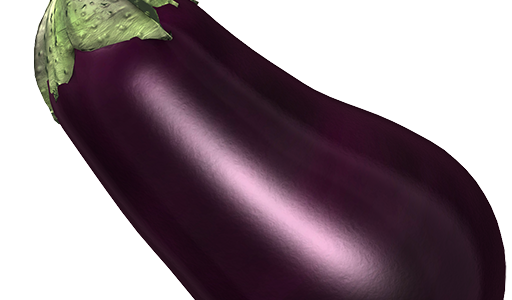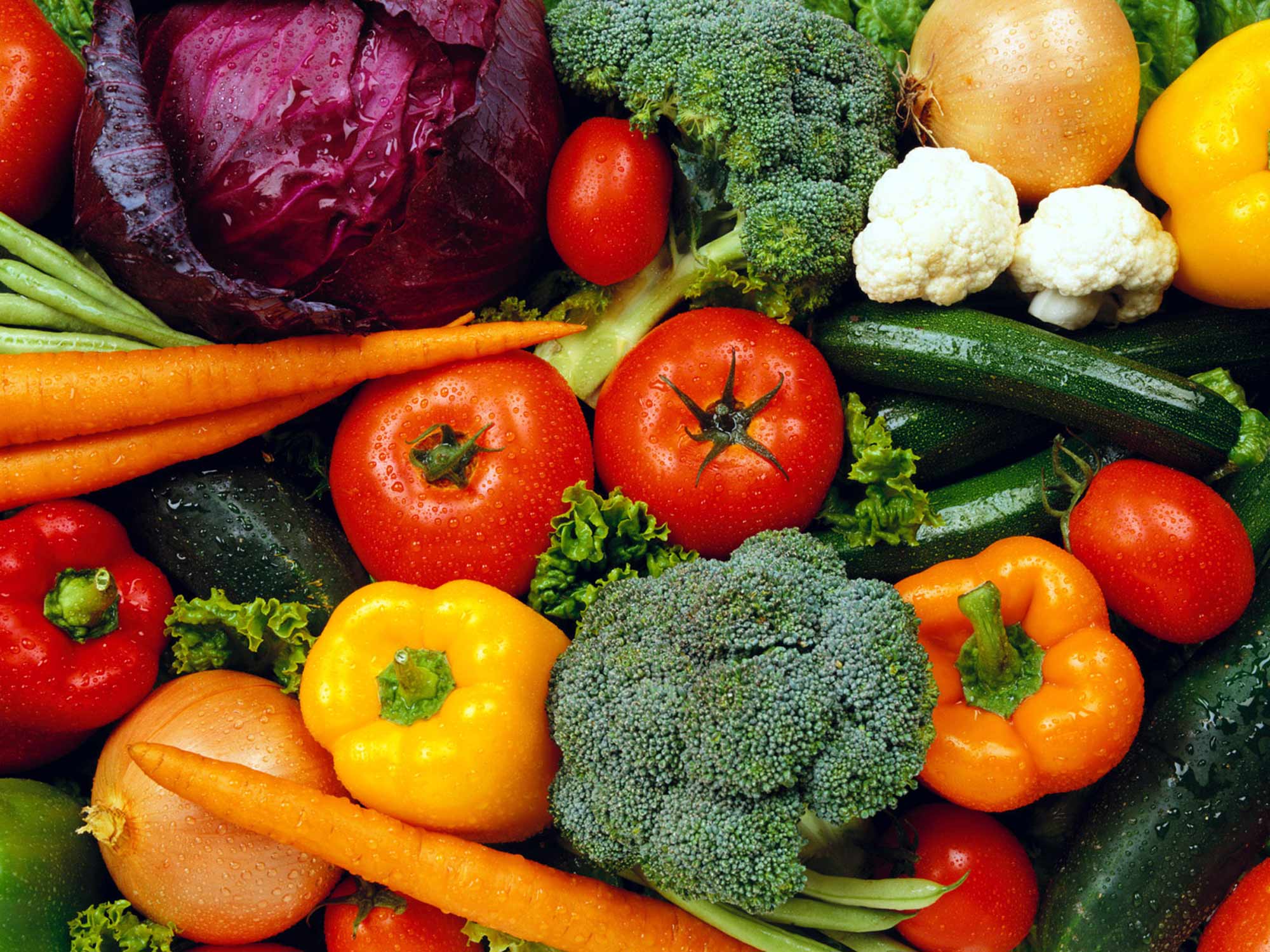BOTANICAL NAME: Solanum melongena
SYNOMENS:
aubergine = berenjena = brinjal = garden egg = egg apple = patlican = melongene = melanzane = Guinea squash.

The Eggplant is a spongy, mild-tasting fruiting vegetable that has a meaty texture. It is low in calories. Generally it is not eaten raw, but is baked, grilled, or sauteed. Eggplants are best when they are firm with unbroken skin, have no soggy indentations and are shiny in colour. Male eggplants tend to have fewer seeds, and are therefore less bitter than female eggplants.
To recognise the sex of an eggplant, look at the indentation at bottom.
If the indentation is deep and shaped like a dash, it’s a female.
If the indentation is shallow and round, it’s a male.
Smaller eggplants tend to be less bitter.
FAMILY: Solanaceae.
ORIGIN:
The Eggplant has been noted as an aphrodisiac and feared as the cause of insanity.
The Eggplant is believed to have originated in India .Cultivationhas been recorded in China as early as 500 B.C. The Eggplant was originally taken to Africa by the Arabs and Persians during the Middle Ages and eventually found its way to Italy in the 14th century. c
Eggplants were consumed without hesitation in various parts of the world, except Europe. In fact the Europeans called it “mala insaneâ€â€”the mad apple or bad egg. Because it belonged to the nightshade family (which contain numerous poisionous varieties of plants) the humble eggplant was considered dangerous and was considered unfit to consume.
Louis XIV during his reign in the 1600’s first introduced the Eggplant to the menu but wa not accepted very well….supurstitious notions that the Eggplant caused fever, epilepsy and even insanity created a belief that the Eggplant was more of a n ornamental plant rather thatn a food source. This belief continued for more than a century.
The United states was first introduced to the Eggplant in the early 1800’s by Thomas Jefferson. Once again – because it belongs to the nightshade family it was slow to gain acceptance into the culinary world and to be accepted as a vegetable. It took until the late 1800’s and early 1900’s when Italian and chinese immigrants entered America to revitalise the potential of the eggplant and make it an socially accepted edible vegetable.
PROVIDE BY WEBSITE:
http://www.northerngardening.com/NGB_articles/eggplant.htm
VARIETIES:
American: Generally regarded as the classic or regular eggplant that you buy in the supermarket. Large in size, purple in colour.
· Japanese eggplants and Chinese eggplants:
have thinner skins and a more delicate flavour than the American eggplants, and not as many seeds – these tend to make an eggplant more bitter. Typically more slender than the American eggplant. They range in colour – purples, pinks, greens.
Sicilian eggplants:
Large in size with purple stripes. Thin skined with a subtle flavour.
Baby eggplants:
Small in size, growing to only about 8 inches long. Sweet flesh and thinner skin.
The small size of Indian eggplants means they are tender and easy to slice.
Garden eggs: very small eggplant, the size of an egg or smaller. A colour range from white to greenish-yellow.
The Japanese eggplant is long and skinny and ranges in color from dark purple to nearly black. It has a smooth, thin skin and a flavor that is both delicate and sweet.
Chinese Eggplant
The Chinese variety of eggplant is easy to recognize as it has a light purple colour and a long, smooth, cylindrical shape. They taste sweeter and more delicate than more common eggplants, primarily because they have fewer seed.
White Eggplant vs Purple Eggplant:
-
White has a hard skin vs purple has a softer skin
-
When cooked the white eggplant has to have its skin removed vs the purple eggplants skin can be left on to be eaten.
-
The white eggplants are considered less bitter with fewer seeds vs the purple eggplant is considerably larger so there is more flesh to eat.
-
The white eggplants are considered creamier vs the purple eggplant is still larger so there is more to eat…
GROWING CONDITIONS:
- Ph 0f 6-7in a rich fertile soil. Best suited to the warmer months of the year to provide 5-6 months of hot weather.
- Eggplants are frost-tender and prefer a full sun position. Early morning sun is advised due to the hairy nature of the leaves.
- A deep rooting perennial that prefers a well drained soil.
- Grow to a height of approx 1m and a width of .5m
- Hairy leaves, sometimes having tiny spines. Star-shaped flowers – usually purple, sometimes white.
- Edible fruit that can beeither: black, purple, green, white, yellow, orange or red, sometimes striped or shaded.
- Harvest times can vary from 45 to 90 days after transplanting seedlings into garden beds.
Eggplants are generally classified by the shape of their fruit. There are five basic groups:
- globe, elongated or cylindrical, egg-shaped, specialty and pea eggplants.
HOW TO GROW:
Spacing – I generally space Eggplant at approx .5m apart to allow for adequate airflow and sunlight.
Staking is not required if you produce strong healthy seedlings.
Plenty of liquid seaweed throughout the growing stage will produce a strong root system to hold the plant sturdy in the ground.
Do not allow to fruit until the plant is of an adequate size. Could you hold up a bowling ball if you were only a baby?
A balanced, organic fertiliser is recommended.
WHEN TO HARVEST:
· This will depend on each variety but tradirional varieties take 50 – 70 days.
HOW TO HARVEST:
· Cut fruit off with scissors or secateurs. Do not rip the fruit off s this will create an opening for disease to enter the parent plant.
POTENTIAL PROBLEMS:
- Potato beetle and Flea beetle – will cause holes in the leaves. Both can be controlled easily with the application of a natural bacteria called SPINOSAD.
- Aphids
- Mites. These will be identified by “small pin pricks into the leaf surfaceâ€. You will not be able to see mites with the naked eye.
- 28 spot ladybug – it will also devour leaves.
· Another way to control insect pests is to encourage ladybugs, lacewings and other beneficial insects in your garden. These “good bugs†are natural predators of aphids, mites and many other damaging insects.
A FULL ARTCLE ON BENEFICIAL INSECTS IS LOCATED IN MY BLOG – BLOG ENTRY 2.
VARIETIES:
THESE SITES HAVE ALL THE INFORMATION ON DIFFERENT TYPES OF EGGPLANTS:
http://www.foodsubs.com/Eggplants.html
http://www.plantnames.unimelb.edu.au/new/Sorting/CATALOGUE/Pt1-African-eggplants.html

A 28 spot lady bug = BAD GUY.



